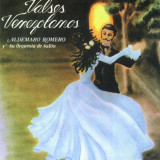 Image via Wikipedia
Image via Wikipedia
During the day yesterday, I encountered some other marvelous Canadians who are reaching far beyond our country to make a difference in the world. I had the privilege of being a digital, online participant (a virtual attendee) in the Open Education Conference in Vancouver, B.C. (#opened09) Dave Cormier was a master communicator who engaged his audience (both online and in the room). His talk had substance, depth, and breadth. People were tweeting about it and watching the Live Stream feed of the session. (Dave is from Prince Edward Island in Canada.) In that session, Dave spoke with Alec Couros who was in the audience. Alec is from Regina, Saskatchewan. He created the diagram of the Networked Teacher as part of his doctoral dissertation which was about the Creative Commons. In CogDogBlog's (Alan Levine) session in the afternoon, once again Alec Couros was mentioned and even highlighted in one of the stories of openness that Alan shared. Alec Couros is another Canadian to be proud of. When I think about digital impact and dancer impact emanating from Canada yesterday, it's time to watch the YouTube video of Oh Canada again. (See Dave Cormier Wow blog post.) That's twice yesterday I was bursting my buttons with delight and joy in fellow Canadians' achievements.
I can see that some Canadian dancers and digital pioneers are poised to impress their world. The question is: How can I make a difference in my immediate world with the new web tools that I have learned about in this class? Where will I begin? Who will I begin with first? What will I do?
Early on in learning about all of these Web 2.0 tools, I felt that I was taking part in a dance. Each new tool was a partner in my dance. Some of those partners stepped all over my toes. Some partners were too tall or too short. Some partnerships felt awkward at first. I didn't know where to put my hands or what to say in the conversation. Some partners held me so close that I felt as though I would smother. However, the more often I danced with some of those partners, the more comfortable I became. I anticipated their moves and followed along. I even contributed some swirls and twirls of my own.
(Can you guess which partner matches up with which dance style? For my classmates in this class, you have probably experienced some of the same feelings.)
Just to continue this analogy or metaphor or simile (please help me, you English teachers) a little bit longer: My blog as a dance partner gazes deeply into my eyes and encourages me to be myself. Sometimes I giggle uncontrollably and other times I begin to speak faster and faster as my words torrent out. Sometimes it is a silent dance as I wonder what to say next. I'm waiting for the next words to tumble forth. Then I overhear a conversation from some of the other dancers in the room which sparks a new topic for engaging with my blog partner.
 Image via Wikipedia
Image via Wikipedia
My Facebook partner (as you may have guessed) is the one that holds me a little too close, too tightly. I feel claustrophobic and just want to get away. However, lots of my family and friends really like Facebook and encourage me to dance with this partner more often. Dancing with Facebook is like a square dance. There are lots of "bow to your partner" and "do-see-do" and "swing your partner". Sometimes I turn in the wrong direction or trip over my feet. I haven't figured out all of the patterns of this dance. Some of the other square dancers are so skilled. Lots of them are wearing fancy square dancing outfits. I just wear my blue jeans or sometimes even my pyjamas. I just can't be bothered to dress up too much for a dance that befuddles me. I creep in to lurk on the sidelines sometimes, just to make sure my family members and friends are still dancing up a storm. Then I rush out the door again.
My Twitter partner was difficult to dance with at first. He was always rushing off to take a quick turn around the floor with someone else. Then he would rush back and try to pick up our dropped conversation. I often forgot what I had been saying. He wasn't very patient. If I talked too long, he would fall asleep (pretty hard to do when you are dancing) or just simply cut me off. I thought this was really rude at first. I wasn't accustomed to having to distill my thoughts (which always ramble on) into short bursts of quality conversations. I far preferred Twitter's brother Blog as a partner. Blog would listen forever as I carried on about my latest bandwagon topic. However, I gradually began to see that Twitter and Blog were alike (at first I couldn't believe that they were brothers). Both of them loved conversations and loved to listen. It's just that Blog listened only to me while Twitter was listening to my conversation and lots of others. Twitter would often repeat (retweet) things that other dance partners had told him. Don't worry, he wasn't revealing any of their confidences. They all knew that Twitter is a blabbermouth. But he's so charming that people can't resist confiding in him. They know he'll tell the next person everything that you have said. Twitter also introduced me to some of his other partners. We sometimes have direct conversations because he helped us to connect with each other. Because Twitter and Blog are brothers, I sometimes share what Twitter has said to me with Blog. Other times I talk about Blog with Twitter. All in all, I really feel comfortable with this brother duo.
Another dance partner that I enjoyed spending time with was Wiki. Wiki actually invited me out to a special dance party. It's called a barn dance. Did you ever read any Louis L'Amou
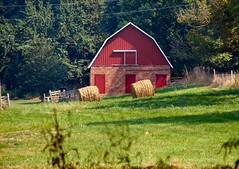 Image by cindy47452 via Flickr
Image by cindy47452 via Flickr
All this dancing has made me tired. Let me sit down to catch my breath. I need to think about all of those partners. And, by the way, did I tell you that because of all I've learned about dancing, I've been asked to teach a dance class? I hardly know what to think. I don't really know a lot about dancing but people are saying, "You know more than we do. Teach us what you've learned. Then we can figure out more steps together." I'm scared. I don't want to hear any cat calls or jeers. What if I trip or fall flat on my face? Oh well, it's no big deal. I just get up, laugh along with my dance class, make a joke about my klutzy ways, and carry on. I never told them I was an expert. (As kolorkid said yesterday in a tweet, "community is a place where you feel safe [to make mistakes] so you can learn".) I'm a few steps ahead of them, that's all. So which dance should I teach them?
Well, all this dancing is making me dizzy and discombobulated. Time to step outside for a breath of fresh air and some icy cold lemonade.
Here's where I shift gears and stop with the dancing analogy. It was fun for me though and helped me t
 Image by adwriter via Flickr
Image by adwriter via Flickr
Here's a short introduction to the wiki:
Welcome to the Caswell Homes Project. The Caswell neighbourhood is one of the historic areas in the Prairie city of Saskatoon. Caswell Hill began as the farm of Robert Caswell. After Caswell sold land to developers, many homes were built in the area. Mrs. Ruth Elliott's Grade 5 students at Caswell Community School researched the history of 25 of these homes. The homes were built between 1908 and 1929. Homes were either beautiful or very old or had a story to tell.
The research carried out by the students into homeowners, their occupations, and some of the stories of the homes, is just the beginning. Your assistance is needed to add information and create links so that more stories can be told.
Although this project began with 25 homes, other Caswell residents are welcome to add information about their homes as well.
Contact R Elliott for more information about how to assist with this project.
I created this wiki several weeks ago when I was learning about the use of wikis in education. Since that time, I have not had the opportunity to go back and work on this wiki. However, this wiki brings together several of the ideas that I am passionate about. I'm passionate about community, technology, teaching, and history.
1. I love history and especially local history. There are so many untold stories. Often Canadians think that our stories are boring. They aren't. They are delightful and interesting.
For example, Robert Caswell, the farmer who first lived on the land that later became the Caswell Hill neighbourhood, raised cattle on this land. When the Caswell School was first erected in 1910, it w
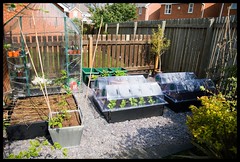 Image by tricky ™ via Flickr
Image by tricky ™ via Flickr
How will we tell these Canadian history stories? Who will tell them? Many of the senior citizens who know the stories best will soon be passing on to their reward. We need to capture those stories for posterity. Then we should put those stories on the internet for the whole world to discover and enjoy. When I first created this Caswell Homes wiki, I invited my mother-in-law (Mom) to type her story about the streetcars of Saskatoon. She did this and later added to her story. I asked my brother-in-law if he remembered the Saskatoon Arena. I added his remembrance to the wiki. (Both streetcars and the Saskatoon Arena are stories arising from one of the Caswell homes.) However, when I asked Mom if other senior citizens in her apartment building would be able to add their stories to the wiki, she said that most of them do not have or use computers. I know that they have stories but would need assistance to give those stories a digital voice.
How could I include these mini-his and her-stories in the Caswell Homes wiki?
2. I love community. I am delighted with my local place in the world. I live in Saskato
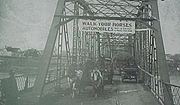 on, Saskatchewan, Canada. It is a beautiful city with a river running through it and so many bridges spanning the river that Saskatoon has the nickname of "Bridge City". The first foot and vehicle bridge was built in 1907 to join the communities of Nutana, Riversdale, and Saskatoon. These three villages amalgamated in 1906 to create the city of Saskatoon. This bridge is still in use today (102 years later) to join the communities on either side of the river in Saskatoon. I see my wiki as a way to join and celebrate community as well. Could those who are digital natives in our public and high schools help give a digital voice to the stories of those who live on the other side of the digital divide? The senior citizens without computers can use those students who have grown up in a world of mouse clicks and texting as a bridge to move their stories out into the virtual world. Along the way, social media can foster personal and inter-generational connections in the real world.
on, Saskatchewan, Canada. It is a beautiful city with a river running through it and so many bridges spanning the river that Saskatoon has the nickname of "Bridge City". The first foot and vehicle bridge was built in 1907 to join the communities of Nutana, Riversdale, and Saskatoon. These three villages amalgamated in 1906 to create the city of Saskatoon. This bridge is still in use today (102 years later) to join the communities on either side of the river in Saskatoon. I see my wiki as a way to join and celebrate community as well. Could those who are digital natives in our public and high schools help give a digital voice to the stories of those who live on the other side of the digital divide? The senior citizens without computers can use those students who have grown up in a world of mouse clicks and texting as a bridge to move their stories out into the virtual world. Along the way, social media can foster personal and inter-generational connections in the real world.3. I love technology. I love computers. I especially love creating with computers. (Although I must admit that I play Settlers of Catan at http://games.asobrain.com/ for relaxation.) I have come to realize that I will never know all there is to know about computers and technology. However, what I do know, I will seek to use and pass on to others. During this online class from the University of Alberta, I have learned about many Web 2.0 tools. These now become part of my technology tool kit. I can see that even though I will select the wiki tool from this kit, I can also use photo sharing, video sharing, podcasts, multi media (Voice Thread), Twitter, and even Facebook as part of the wiki.
Recently I visited one of the homeowners of one of the Caswell homes that my students researched. Since my last contact with her, she has unearthed some photographs of Dave King who built her house in 1912 or so. She also has some information about him. Those photographs could be scanned and uploaded to the internet using photo sharing. She could make a podcast to talk about what she knows about him. His photo could even be uploaded
 Image via Wikipedia
Image via Wikipedia
4. I love teaching. A few years ago, I was visiting my cousin Wally Stinson. He had a laptop that he was learning to use. Wally was a wonderful man (he has since passed away). He was a teacher who was really involved in the sports community. A few times when I went to visit Wally and his wife Elinor, I gave him some tips about using his computer. His children and grandchildren had also given him some pointers. However, he told me repeatedly that I was the best computer teacher he had ever had. Coming from a master teacher like Wally, that was a high compliment.
So where will I find these lovely people that I am going to teach to use a wiki? I don't have a school this year. I guess I'll have to go out into the highways and the byways and compel them to come in. History + Community + Technology + Teaching. Let me think.
I guess I can't force/compel anyone to join me. However I can invite and entice them. I know that senior citizens have many untold stories that will go to their graves with them if they aren't preserved for posterity. I will invite them to tell their stories. I need to make the technology part of it really simple for them. I know
 Image by Jordon via Flickr
Image by Jordon via Flickr
Who else could be part of this wiki community? I know the Saskatoon City Archives manager. I will talk to him. As well, there is the Saskatoon Heritage Committee. They publish a magazine four times a year. Maybe they would like a digital way to tell their stories. I know several people on that committee. I will call them.
This year I will be a student at the University of Saskatchewan. There are several avenues I could run down seeking assistance. Yesterday Alec Couros put me in touch with another Twitter user in Saskatoon, Richard Schwier of the University of Saskatchewan. He works in the educational technology area in the College of Education. I will talk with him about this project. He may have some ways of recruiting student help. I could also offer free classes to education students--perhaps about podcasts or contributing to a wiki. They could help the senior citizens record their stories. (Just a little aside, after the Caswell Homes Project, many of my students and their families grew very interested in Saskatoon history. A side benefit of helping to tell other people's stories is that you begin to value those stories as your own.)
What about the Saskatoon Public School Division, my employer? We have an online learning center. I will get in touch with the leader there. She will have some ideas for me about how to involve our public school students in this project. I think we will receive some media
 Image by aranarth via Flickr
Image by aranarth via Flickr
 Image via Wikipedia
Image via Wikipedia
Earlier this week, in a discussion post (not in my blog), I talked about "Riffing on a Chord". This is what I like to do in my blog posts. Grab a chord and improvise. Make up a melody and some harmonies to go along with that chord. As I have been writing this post about what comes next in my use and teaching of technology I have been riffing on the chord about the dance. I don't believe that I am an expert dancer with technology or web tools--not like Will Richardson, Alec Couros, or Dave Cormier. Yet I am willing to gather people around me who would like to learn and teach them what I know. So let's keep dancing. Shall we dance?
![Reblog this post [with Zemanta]](http://img.zemanta.com/reblog_e.png?x-id=104a5ff6-c4cc-41f7-83a2-de18b4de2e10)

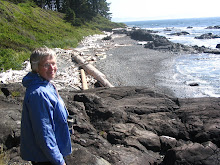



It has been nice dancing with you Ruth - I feel like our class has been ______ (insert your favorite group dance here) and I enjoyed following your analogy (?, my guess?) through the narrative.
ReplyDeleteAdding hyperlinks to direct your reader back to your past posts could be a nice way to play even more with the dance theme - the reader could join you by returning to those posts and feel even more in the dance (a two-step?).
Have a great weekend.
~:) Heather
Ruth, your virtual contacts and paricipation in the Open Education Conference certainly shows how the globe is shrinking, as well as the manner in which people are now connecting. Good for you, Ruth, you are heading up the pack.
ReplyDeleteBy the way, I missed the So You Think You Can Dance program. Too bad. I really enjoy those.
Lori
Ruth,
ReplyDeleteYour dancing analogy (I think that's what it is?) was wonderful to read and certainly worked with the Web 2.0 tools you connected each one to. A pleasure to read - thanks!
Whoever you work with on your project will be very lucky to share in your passion and excitement. Those at the WDM I'm sure would be more than interested in sharing their knowledge with you and the virtual community - what better way to put it all together and ensure that knowledge carries on.
Carol =)